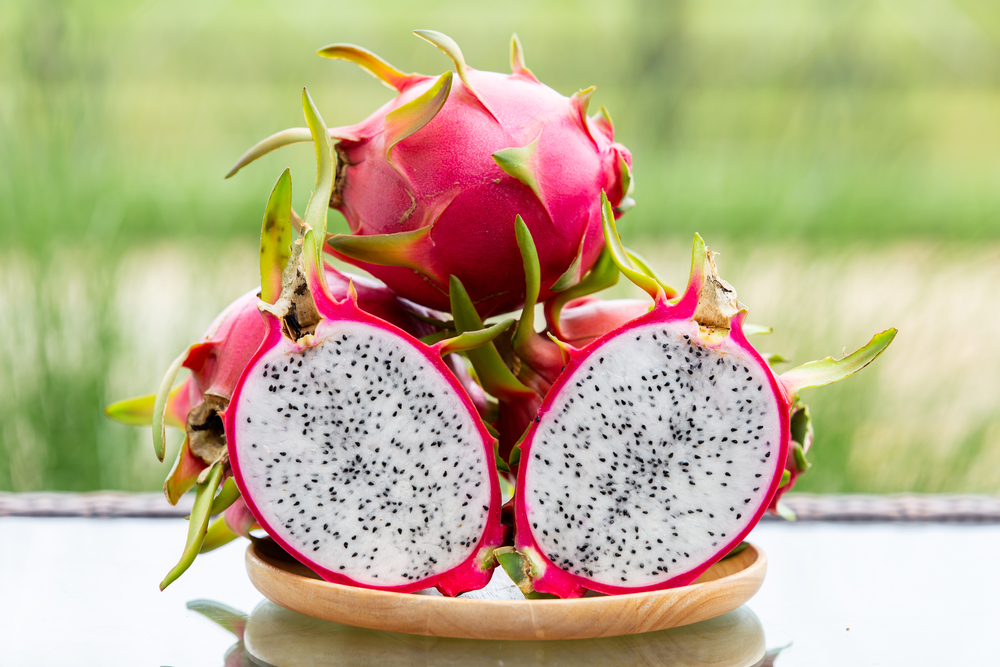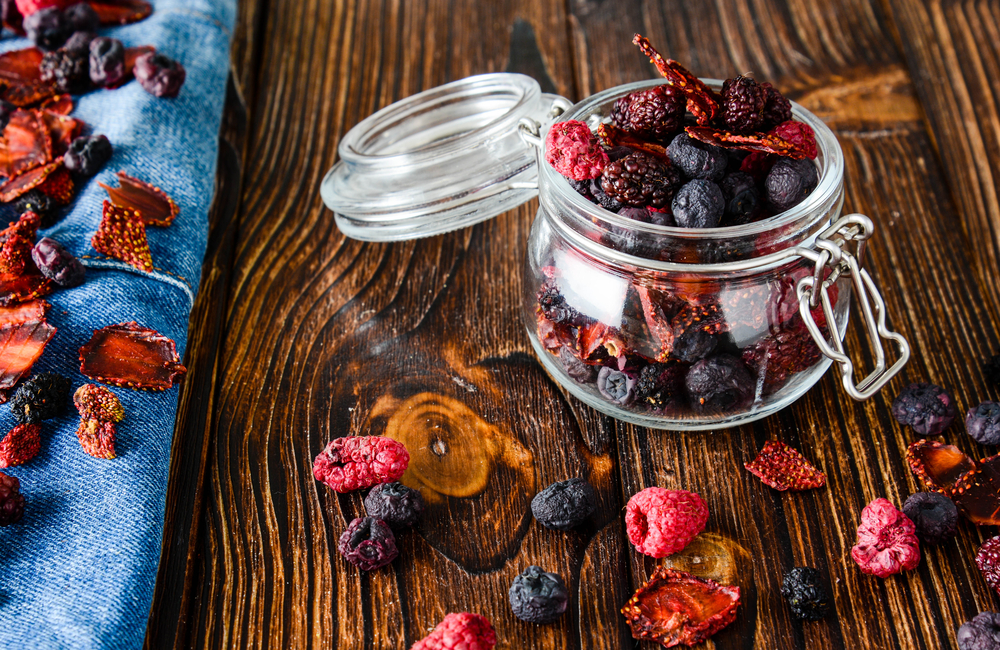Tomatoes are a staple fruit, often considered more of a vegetable, that are iconic on any dinner table in hundreds of cultures. Put it with eggs, make it into a sauce, put it on your sandwich, fry it, stew it– the list goes on. There are infinite ways to eat a tomato.
If you’ve never eaten a tomato, are trying to find the correct verbiage to describe one, or are interested in the many varieties, you’ll come to a basic question. What does a tomato taste like?
Tomatoes are acidic fruits that are sweet, tangy, and balanced. The amount of sugar in a tomato will change up the verdant sweetness that is lined with mild bitter, tart notes. Some varieties are sweeter or more complex than others.

What Does A Tomato Taste Like
Originally native to South America, tomatoes (solanum lycopersicum) are a fruit belonging to the nightshade family. They’re rich in the antioxidant lycopene, and are an excellent source of vitamins C and K. Mature tomatoes are usually red, but can run the spectrum of yellow, orange, green and purple.
Tomatoes are acidic in nature, often used on Ph scales to represent an acid. If you’ve ever had acid reflux after eating a tomato-heavy dish, you can attest to this. Bright red, firm to the touch, and wildly versatile, the taste of a tomato is complex to describe.
Taste
Tomatoes balance out notes of acid and sugar on the tongue with volatile compounds, which help aroma perception. Tomatoes release the volatile compounds and oils in the fruit while you chew; the crushing process actually contributes to the flavor. That aroma is sent through your nose and into your brain to create a taste.
Depending on the variety, tomatoes can have up to 400 volatile compounds, with 15-20 of them being ‘assertive’.
If you’ve ever noticed that food doesn’t taste good when you have a cold, it’s because you can’t smell it. This is especially true to the taste of a tomato. Much of a tomato’s flavor depends on the aroma. That’s not to say it doesn’t hold up to tasting alone.

What ultimately contributes to the flavor in a tomato is the balance of sweet and tart. They are the major players in what gives the ‘classic’ tomato taste. For example, a tomato that is high in sugar but low in acid is sweet. One that is low in both sugar and acid is bland or mild.
When you think of the flavor of a tomato, you’re likely thinking of one that is a 50/50 handshake between the two notes. Tomato afficionados have classifications for the ways a tomato can taste:
- High sugar and high acid tomatoes, ones with plenty of volatile compounds, are balanced, complex, or rich.
- High sugar and high acid, but not high in volatile compounds, are sweet-tart.
- High sugar but low acid is sweet or bland.
- Low sugar but high acid is tart.
- Low sugar and low acid ones are not common, and are considered fairly tasteless. This isn’t the ideal of any variety or breed of tomato.
Sweetness and tart work together in the taste of a tomato, but not the way you’d find in an orange or other citrus. The type of tartness in a tomato is more ‘vegetable’ like.
A tomato tastes clean and fresh. There’s the faintest run of bitterness to the taste.
Colors
Most tomatoes, of course, are red. Rich red with a faint hint of orange is the ‘classic’ look of the fruit, but they are available in an entire spectrum of hues. Usually, you will find tomatoes grouped by their color as much as tastes. What makes tomatoes taste and look distinct is the way they balance acids and sugars:

- Red and pink tomatoes are higher in sugar than they are in acid, and are thus sweeter.
- Orange, yellow, and white tomatoes are high in volatile compounds and sugars, but lower in acid. The combination of the compounds and sugars makes for a mild, sweet, interesting flavor.
- Purple or black tomatoes get their color from a mix of red and green pigment. These breeds are complex and nuanced, often with notes of earthiness or bitter flavors. Their acid and sugar levels may or may not be balanced.
Varieties And Heirlooms
You have probably heard the term ‘heirloom tomato’ before, but what is an heirloom tomato? Basically, what makes an heirloom tomato is the seeds. Seeds have been passed down from plant to plant, sometimes by people who have saved the seeds from year to year. They’re specially cultivated and curated tomatoes.
Think of them as designer tomatoes, basically. They have a shorter shelf life and are less resistant to disease than standard or hybrid tomatoes, meaning they’re handled with care. Heirloom tomato cultivars come in a vast array of colors, shapes, and sizes.
Heirlooms seeds ‘breed true’. That means they’re cultivated through selective breeding and both sides of their DNA come from a common stable cultivar. A staple of heirlooms is that they are open pollinating, so they’re open to cross pollination.
There are hundreds of varieties of heirloom tomatoes. Each has its own taste, appearance, and history.
Arkansas Traveler
These pink tomatoes perfectly balance sugary sweetness with a bite of tart. A medium sized fruit, their sweet flavor is mild, but recognizable. Arkansas travelers are perfect in salads, or given to kids who think they don’t like tomatoes.

Aunt Ruby’s Green
As the name suggests, these beefy heirlooms are yellow-green and have faint stripes. You’ll recognize them by their plump shapes and those distinctive bands of color. They’re sweet, juicy, and have just a bit of a spicy rush.
An Aunt Ruby’s Green tomato has firm flesh and a pleasant, almost floral scent.
Big Rainbow
Boldly striped with red, orange, and sometimes green, big rainbows don’t just live up to their names in color. These huge fruits can be up to 2lbs! The flavor is described as being super sweet, almost candy-like.
Brandywine
Brandywine tomatoes could almost be in a league of their own, given that they also have their own sub-varieties. Standard brandywine tomatoes are one of the most popular heirlooms. These sweet tomatoes are ‘meaty,’ meaning they don’t have a lot of pulp.
Black Beauty
One of the absolute darkest types of heirloom tomatoes, black beauties are purple-black on the smaller side. They feature extreme expressions of anthocyanin – the same antioxidant that you’d find in blueberries and blackberries. Inside, the flesh is a deep red.
Striking in color and striking in taste, black beauty tomatoes are rich and smooth tasting with an incredible savory flavor. Storing it at room temperature will allow the equally balanced sweetness and acidity to develop, making it even more delicious.
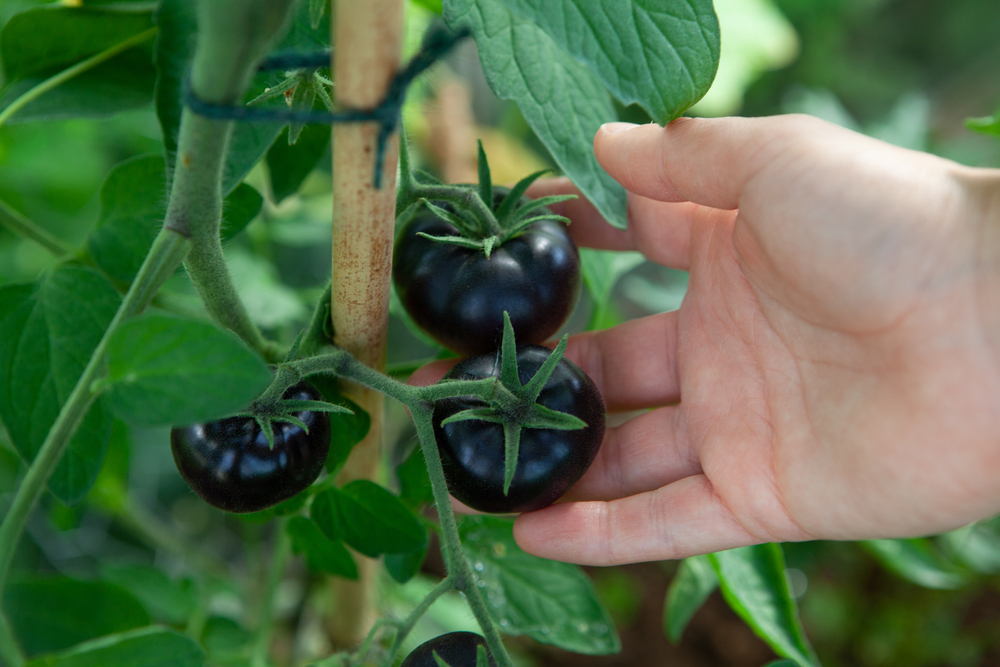
Black from Tula
This variety is of the blackish, purple variety of heirloom tomato. The flavor in this Russian tomato is interesting and bold. It is ‘old-fashioned’ in taste, rich and sweet, with just a faint peppery quality.
Black Krim
Rich in color and flavor, these deep reddish-purple tomatoes are intense on the tongue. The taste is smokey, and even a little saline or salty tasting. The traditional sweetness of the fruit is brought out and complemented by that spiciness.
Being salty and sweet makes it a perfect addition to tomato based sauces, especially pizza sauce.
Carbon
A striking black-purple variety of tomato, this beautiful, richly colored fruit has a standout flavor. It is deep and complex in taste, and grows to a large size. The sweetness balances well with tart, and there are some bitter, peppery hints as well. They’re beefsteaks, meaning they have a lot of ‘meat’ and not much pulp.
They’re stellar in caprese salads and on sandwiches. They’re even good eaten whole.
Carmello
This might be the closest to what you’d picture a ‘standard’ tomato to be. It is bright red, perfectly round and even, and grown in abundance. The flavor is ‘perfect’, and tastes just as sweet or tart as you’d like a tomato to. Carmello tomatoes are wonderfully juicy.

Caspian Pink
Naturally pink, round, plump, and juicy, these tomatoes are said to have originated in Russia. They’re sweet and mild, but their tart edge isn’t to be missed. These tomatoes are meaty, succulent, and rather large. They’re a favorite among heirloom growers.
Cherokee Purple
Characterized by a deep dusky pink-purple color, these huge tomatoes can have long lineages. Some heirloom seeds of this variety can be traced back as far as before 1890. The flavor is sweet and mild, while carrying smoky tones and little acidity.
The flavor is somewhat earthy, and has a taste that lingers on the tongue. Other tasters do detect different levels of acidity, but this varies from person to person.
Costoluto Genovese
Hailing all the way back to the early 19th century, this fluted Italian favorite is a unique sight to say the least. The shape is almost flattened, and heavily ‘ribbed’. A red variety, it is considered perfect for canning or making into sauces.
As for the flavor, it has a ‘classic, old school’ taste. Not to sweet, not too tart, not too bitter. The taste is strong, but perfectly balanced. It harnesses the clean aroma of nice, ripe tomato into a delightful eating experience. It’s meaty, without too many seeds, meaning it’s great to bite into right off the vine.
Dona
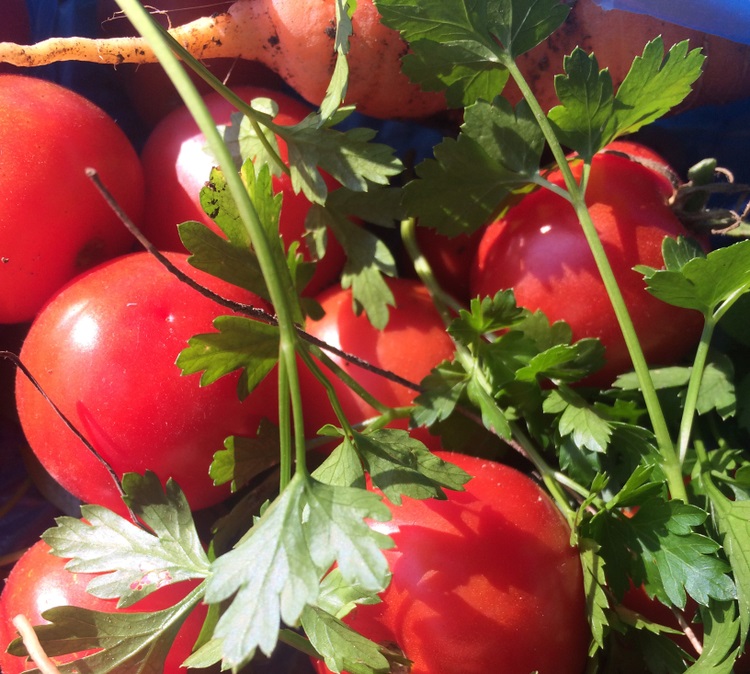
A dona tomato is a smaller version of a carmello. It is red, round, and sweet. They’re a good ‘workhorse’ of a tomato, being ready for anything. These are a ‘standard’ variety of tomato, and lean more into the tartness. Their flavor is that of a ‘classic’ tomato.
Druzba
A red variety that is prone to growing with unique shapes, this heirloom is smooth-skinned and usually rather large. On average, they clock in at about 4”. The flavor is robust, an falls into the spectrum of a sweet-tart flavor. They’re meaty and sharp on the tongue, perfect for cooking.
German Johnson
Despite a European nomenclature, German Johnson tomatoes actually originated in North Carolina. They’re somewhat similar to Brandywine tomatoes, and have a signature acidity. Deeply tart, they’re perfectly sour.
German Pink
As a full-bodied pink type of heirloom tomato, German Pink tomatoes have a full, sweet flavor. In fact, they’re somewhat floral in presentation, bringing to mind their origins as a member of the nightshade family. This hearty 1-2 lb cultivar has bee around in the US since the 1800s, and is another commonly recognized heirloom.
These beefy tomatoes are meaty, almost seedless when sliced. That makes them perfect for a sandwich, as they wont wind up leaving bread to get soggy.
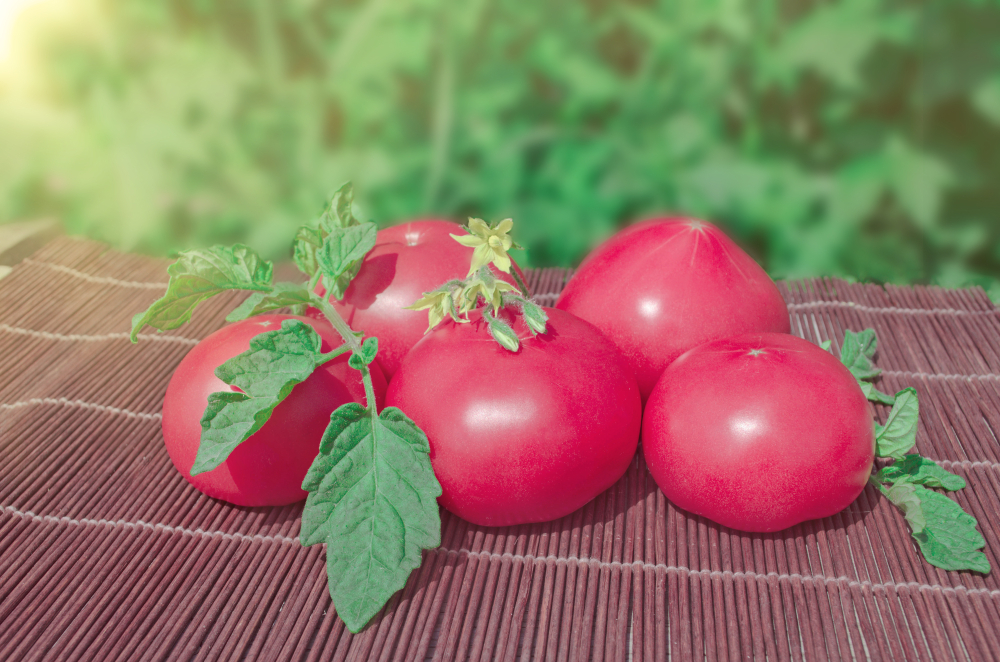
Gold Medal
Marbled with attractive yellows and greens, this type is going for the gold. The yellow green fruit also blushes with hints of red, making the smooth fruit striking to behold. Light on the acid, Gold Medal tomatoes are almost cherry-like in how sweet they are.
Great White
Striking in their pale yellow-white appearance, Great White tomatoes are usually clock in at 1lb, and have a creamy white flesh. The flavor is mild, with low acidity. They’re fruity, and almost tropical, bringing to mind the flavors of pineapple or guava. Inside, the flesh is unusually smooth and almost free of gel and seeds.
Green Zebra
Like the safari animal it gets its name from, green zebra tomatoes have bold green and yellow stripes that are distinctly defined. Notable for having a rich flavor, the bright green flesh inside is incredibly striking, almost neon. A green zebra tomato is sweet with a sharp bite, making it perfect for salads.
Japanese Black Trifele
Somewhat oblong in shape and of the black-purple family, Japanese trifele tomatoes have a unique taste to them. Some describe the flavor as being deep, and almost chocolatey in the complex sweetness. They’re smoky and rich, referenced by their dusky mahogany tone.
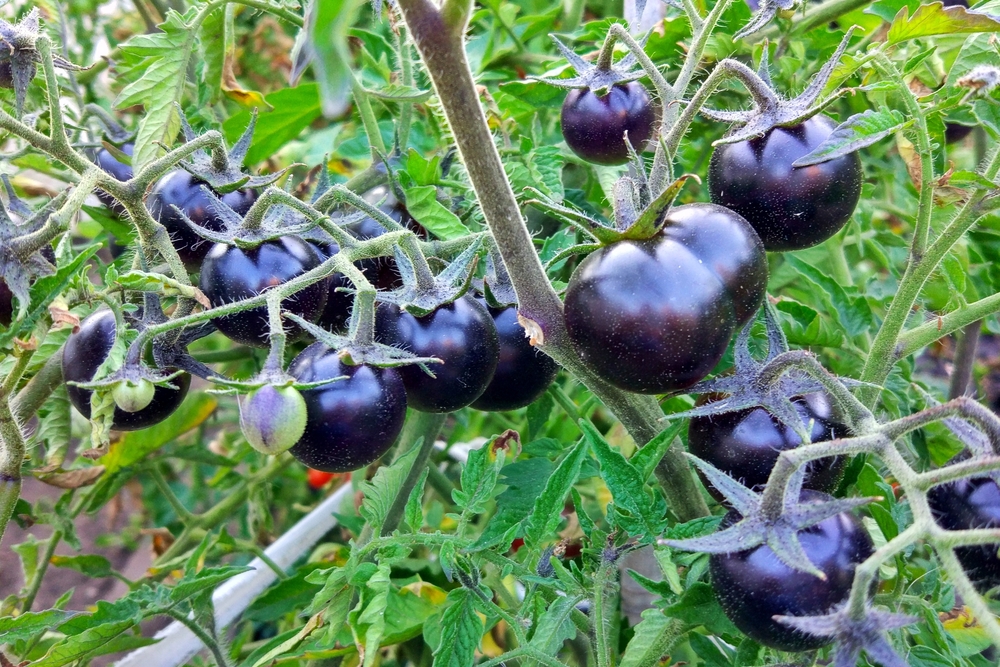
Jersey Devil Tomato
These pendulant tomatoes might be mistaken for peppers, given their interesting shapes. Jersey devil tomatoes might be devilishly named, but they’re a treat to look at on the vine. They’re a pillar of the New Jersey tomato industry.
Inside, these tomatoes have no seeds at all, being almost paste-like in their interiors. Both the texture and taste are meaty, perfect for slicing. They’re slightly sweet, full tomato flavor to these oblong fruits.
Juane Flamme
Petit and bright orange, these perfectly snackable tomatoes are called a drying tomato. This is because when they’re dried out or roasted, their vibrant orange exteriors do not fade or discolor. They’re sweet, with very low acidity. To some, the citrus-like flavor is almost tropical.
Roasting or drying this breed will only serve to enhance these flavors, drawing out the poignant sweet-tartness. If you’re looking to top a salad with a sweet pop of color, the brightly toned Juane Flamme is perfect, both in taste and hue.
Kellogg’s Breakfast
While the name likely brings to mind images of corn flakes and milk, these tomatoes have very little to do with the breakfast food. They’re from West Virginia, and named for a railroad supervisor who preserved the seeds. They’re orange, with a superbly sweet kick to their meaty flesh.
Limmony
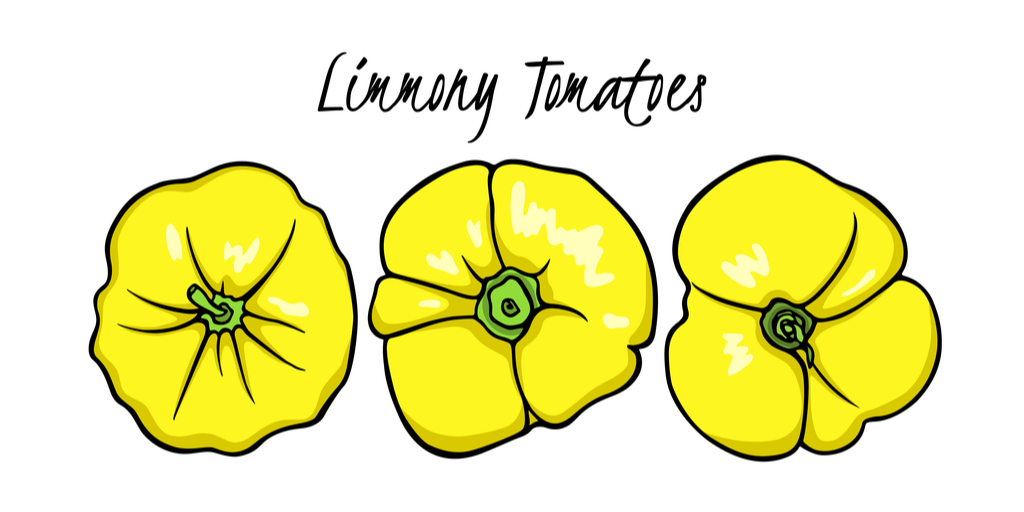
The name ‘limmony’ makes one think of a lemon, and that’s exactly the point of the nomenclature of this yellow heirloom. In flavor, this tomato is zesty, with a bright citrus flavor and sweet undertones. They’re crisp, with a pronounced acidity.
Matt’s Wild Cherry
Tiny, round, and red, these wild heirlooms pack a lot of flavor into a miniscule bite. Matt’s wild cherry tomatoes are full-flavored and powerfully sweet. The fruits are softer than most firm tomato varieties, but this makes them super stars of salsas.
Mortgage Lifter
Mortgage lifter tomatoes are so named because the original grower, M.C. Byles of Logan, WV, used his crop to pay off his house. Being 1lb each, mildly sweet, and vibrant pinkish-red, these tomatoes might be worth the price. They’re tender fleshed, with an amazingly juicy inside.
Moskvich
Luscious round, red globes are richly flavored in this Russian variety. They’re acidic, faintly sweet, and just meaty enough. It’s not an unusual taste, following the classic profiles of flavors, but that makes it versatile. You can use a moskvich tomato for just about anything. Salt will really elevate the flavor of this fruit.
Paul Robeson
A black-purple variety of heirlooms, this mid-sized tomato was named for the famous opera singer. The flavor is distinct and even iconic, with this type of heirloom having a strong following among growers. Chefs describe the taste as complex and smoky, with robust, earthy sweetness.

Intensely flavorful and powerfully juicy, Paul Roberson tomatoes are well worth the high praise they’ve earned over the years.
Primary Colors Tomato
This gilded gold variety of tomato is petit with a bright yellow interior. More seed-heavy than beefsteak varieties, they’re perfect for snacking on. The flavor of a primary colors tomato is rich, and fruity-sweet.
Pruden’s Purple
Pruden’s Purple tomatoes aren’t even actually purple. Instead, the outside flesh is a bright reddish-pink, with rich crimson flesh. They’re generally between twelve and sixteen ounces. As for flavor, you’ll find them riding the line between sweet and tart, with plenty of juices.
They’re a meaty breed, meaning they have a high ratio of flesh to gel. That makes them perfect for sandwiches, or in anything where you don’t want an excess of seeds.
Purple Calabash
Purple Calabash tomatoes take hints from old-world Mexico, similar to what was grown pre-colonization. A black-purple variety with deep ridges and ruffles over a squat body, the flavor is certainly complex. These tomatoes are mostly tangy, with strong waves of citrus over their sweet undertones. They’re delightfully acidic.
Some find the skin to be somewhat tough, and it’s true that it does have a chewy exterior. The flavor within that tough skin is rich and fairly concentrated.

Purple Russian
More oval shaped than other tomato varieties, deep black-purple Purple Russians are smooth and carry a savory, meaty flavor. That depth is complimented by sweetness and barely any tart. They’re unique tasting, which makes them an ideal compliment to a salad or soup.
This variety was cultivated by Irma Henkel in the Ukraine, and are on the smaller side. Their gel in particular is a striking dark purple, almost black.
Spoon Tomato
Said to be the smallest variety of heirloom tomatoes, spoons are so named because they can fit right on a spoon! They’re said to be the smallest breed of tomato around, but they’re not short on taste. Spoon tomatoes are boldly acidic, and pack a punch of classic tomato tang.
They pop in your mouth when you eat them, making for a juicy experience. They’re excellent in salads or soups because of this.
Striped German
A ribbed and beautifully striped tomato, this variety of heirloom sports vibrant red and yellow, with small patches of green on some. They inside of these tomatoes is marbled, making for a stunning display. They’re incredibly soft in texture, more so than other varieties.
In terms of flavor, the smooth, soft texture is underscored with a fruity taste. It’s a complicated flavor that doesn’t have as much of the ‘clean’ taste of other varieties. However, it still shines through as a summer favorite.
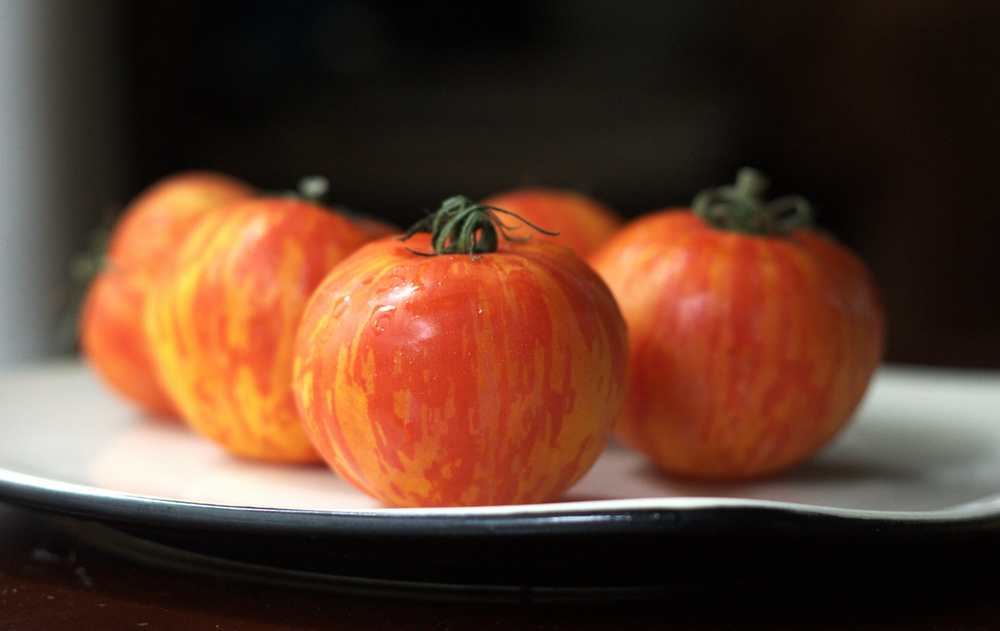
Thessaloniki
A red heirloom, these red ‘greenhouse’ tomatoes have a pleasant, mild flavor. These are another ‘classic’ variety; what a lot of people picture when they think about tomatoes. What makes them so popular is how hearty they are, being resistant to sunburn, spots, or cracking.
Their flavor is ‘classic’, balancing tart and sweet. It’s an earthy, meaty taste that is excellent on a sandwich or burger.
Conclusion
Tomatoes come in countless varieties, each with their own unique tastes. In general, however, tomatoes will have a somewhat standard flavor profile. They are sweet, tangy, and juicy. The volatile compounds in their flesh create an aroma that lends to the taste.
Heirloom tomatoes are specifically cultivated to have unique colors, tastes, and appearances. They’re all a little different, and worth trying out to find your favorites.





